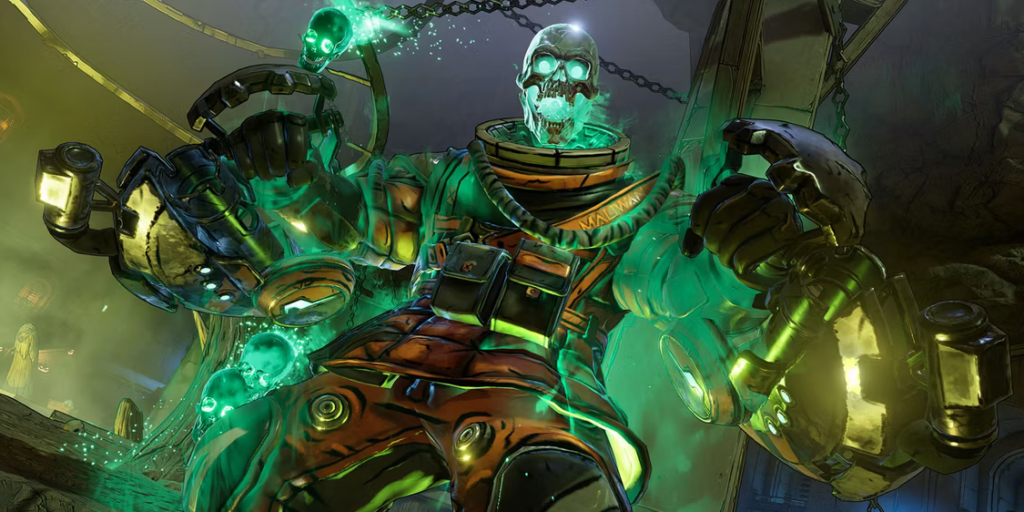
This essay was written by Matt Dion.
Apart from being a content consultant at Naavik, Matt has been a product manager in the industry for the past 2 years. He started his PMing journey at Jam City, and is currently sharpening his PM teeth at the powerful EA!

Source: Wired
When the tech journalists, venture capitalists, and talking heads of the games industry first introduced the world to the concept of “cloud gaming,” the hype was sky-high:
Play games anywhere!
4K quality!
Cross-play on all devices!
Expand the audience for console experiences!
...But somewhere between the Google Stadia reveal and the fast-follows from Amazon, Microsoft, and even Wal-Mart, the promise met a harsh reality.
While lowering the barriers for non-console gamers to be able to play console games is a noble cause, there are many reasons why cloud gaming hasn’t yet come to fruition. One is that there needs to be a proven market for console games beyond console platforms. Most AAA experiences designed for PC and console do not accommodate mobile form factors (for example) without requiring additional peripherals. Furthermore, there is no established market for those gamers beyond Xbox, Playstation, or PC. Plus, even if AAA experiences could transcend their existing platforms, they would still fail to meet players’ expectations due to higher latency, subpar visuals, and poorer immersion. If someone wants to play a console game, the best way to do it is still — you guessed it — on a console.
Another point of failure can be attributed to business models. Google Stadia, for example, asks players to pay a monthly subscription price in addition to the cost of individual games. This can quickly become prohibitively expensive for most gamers, and certainly does nothing to expand the market into non-console gamers. On the other hand, the more players that utilize cloud gaming services, the greater the costs associated with operating and scaling the infrastructure. Operators cannot simply spin up more servers on AWS or Azure; rather, they must acquire GPU-equipped instances, which are an entirely different (and more expensive) product than the multipurpose servers we typically associate with cloud computing. The math just doesn’t check out.
While Google and others seem willing to eat these costs for now, profitability seems a long way off (to say nothing of mass adoption). It shouldn’t be surprising; after all, slapping old school business models onto new technologies often misses the point. In this case, what’s more interesting is utilizing cloud technologies to unlock entirely new types of interactive experiences, rather than retrofitting existing experiences into a cloud delivery format.
One noteworthy development borne of the initial enthusiasm around cloud gaming was a surge of investment in an emerging genre: Massive Interactive Live Events, or MILEs. This concept is not entirely new, as I’ll illustrate below, but it utilizes the advantages of cloud technologies in ways that are both achievable and ripe for further innovation.
MILEs from Nowhere
The first such foray into MILEs occurred in 2014, when a phenomenon known as Twitch Plays Pokemon exploded into the collective gaming consciousness. An anonymous gamer hooked up an IRC bot and a GameBoy emulator running 1996’s Pokemon Red to a Twitch stream, allowing chat commands to control the actions taken by the “player.” All inputs — everything from player movement to choice of Pokemon to menu commands — were entirely controlled by majority vote in the Twitch chat. As one might expect from Twitch, this was chaotic... but ultimately successful in completing the game, with a Guinness Record of 1.2 million players and a concurrent peak of 120,000. The event went on to spawn countless “crowdplay” imitation streams, covering games as varied as Halo, Metal Gear, and Dark Souls.

Another important milestone took the form of 2017’s April Fool’s-joke-turned-social-experiment, Reddit Place. Place allowed any Reddit user to alter a pixel on a 1,000 x 1,000 pixel grid, choosing one of 16 colors, but forced them to wait a few minutes between placing each one.

The emergent gameplay that resulted from this experiment was fascinating, as evidenced in the timelapse .gif below. Players formed factions and battled for control of the board, coordinating their efforts to expand and defend their virtual territories. This level of planning and social interaction is something that most game developers can only dream of creating with their products. To achieve it around such a simple premise is both noteworthy and exemplary of the promise of MILEs.

Key to our understanding of these early MILEs is the ability for huge numbers of participants to simultaneously experience a shared simulation. The “gameplay” need not be processed and synchronized in the cloud — only the inputs from players. This allows for massive concurrency without an equally massive number of gameplay simulations — a notable departure from today’s large-scale multiplayer games, which require each simulation to run on a player’s local console.
The actual “game” itself can run on standardized hardware. From there, the player’s viewing experience can be abstracted out into separate rendering processes, streaming the action back to their devices in the same way that they might watch YouTube or Twitch. Where cloud capabilities allow for differentiation is in the ability to deploy huge computational power against complex processes such as advanced AI, elaborate simulations, or photorealistic environments. These sorts of processes would be far more difficult to achieve in a non-cloud-enabled experience, leading to trade-offs in other areas such as concurrency, graphical fidelity, or simpler AIs.
Subscribe to Master the Meta
Sign up to receive gaming industry insights every Sunday, straight in your inbox.Sign Up
Going the Extra MILE
Enter Rival Peak, the most ambitious MILE to-date, created by Genvid Technologies and Pipeworks Studios in partnership with Facebook and DJ2 Entertainment. Launched in Dec. 2020, Rival Peak took place in something of a Lost-meets-The Sims simulated game world, persistent and live for viewers around the world, 24/7. It was less of a “game” and more of a video-on-demand (VOD) reality show. All of the characters that inhabited the experience were AI simulations, influenced by the inputs of the live audience, with one “contestant” voted out each week. The entire 12-week experience was complemented by a weekly recap show, Rival Speak, hosted by actor and host of TableTop, Will Wheaton.

Rival Peak was the culmination of years of work from Genvid Technologies’ CEO, Jacob Navok, and his team of streaming and cloud gaming experts. Before founding Genvid in 2016, Navok helped Square Enix launch its Shinra Technologies cloud gaming platform, working alongside visionary former Square Enix CEO Yoicha Wada. In fact, several former Shinra Tech members make up Genvid’s leadership team, including COO Chris Cataldi and CTO Fabien Niñoles, with Wada and Jocelyn Houle (also ex-Shinra) acting as Advisors. Other key leaders bring notable experience from Valve, Twitch, and Amazon.
Genvid was founded to capitalize on the opportunities presented by interactive streaming: the premise that cloud computing, improving bandwidth, and pervasive connectivity would converge to enable new forms of interactive entertainment. Taking a participant-first approach (rather than a player- or viewer-centric one), the company aims to enable “both lean back and lean in experiences without the need for skill, that let the participant affect the experience at their chosen level of engagement.” In doing so, they created a suite of tools intended to aid developers in creating the next generation of interactive experiences.

Equally as important as Genvid’s technological innovations were its partnerships with Pipeworks Studios, DJ2 Entertainment, and Facebook. Genvid is not a game developer, despite the significant experience its team brings to the table. To create the virtual world of Rival Peak, Genvid brought in Pipeworks Studios, a seasoned co-development studio most known for its work on Terraria, as a Unity development partner. To tackle the narrative elements of Rival Peak, create the characters, and produce the Rival Speak recap show, DJ2 Entertainment was brought in. Operated by veterans of Telltale Games, DJ2 was a perfect fit for the unpredictable viewer-driven storytelling of Rival Peak. Finally, and perhaps most crucially, Genvid partnered with Facebook to create a seamless, mobile-first experience through its Facebook Watch platform, giving Rival Peak the reach and scale needed to fuel its global ambitions. The entire endeavor would likely not have been possible without the built-in audience and infrastructure that Facebook brought to the project.

The show concluded it’s run with more than 100M minutes watched, coming from 70+ countries. Yet the significance of Rival Peak cannot be overstated, regardless of its success or failure from a pure metrics perspective. With a budget north of $10M, it signifies the appetite among investors for interactive livestreaming. It’s also a bold first step into a new generation of cloud-native experiences.
“Genvid Technologies is now in conversations with world-leading IP owners to adapt their fictional worlds and characters to the MILE genre. We see RIVAL PEAK as our “Ingress,” the title that preceded the hugely successful, polished, major IP-led “Pokémon Go” for Niantic, and now we’re excited to put all our learnings towards making what comes next.” — Jacob Navok
A Journey of a Thousand MILEs Begins With One Step
I believe that Rival Peak was a strong proof-of-concept for a new form of interactive entertainment that will see significant investment and interest in the coming years. The emergent gameplay in early MILEs like Reddit Place and Twitch Plays Pokemon are indicators of the potential for communities to form around future MILEs that are more fully-formed in their vision and are supported by robust live ops and detailed business models. In fact, the “Lean Back” nature of MILEs may go a long way towards realizing an initial goal of cloud gaming: expanding the market for games generally by meeting players where they are.
Yet it would be wrong to assume that the casual, VOD feel of Rival Peak signals an inability to produce MILEs that are more gamelike. In fact, Navok himself has said that “[Facebook made] an explicit request: ‘don’t make this into a game please, make it into interactive television.’” There is nothing inherently limiting in the format or technology of MILEs that would prevent future developers from creating experiences more recognizable to gamers. In fact, I believe we will soon see MILEs with stronger core loops and deeper metagames, built upon the best practices of today’s successful F2P game developers.
Even that may be too prescriptive, as MILEs are an evolution of interactive entertainment more broadly, not just of games. It won’t be just game developers and publishers exploring this nascent field, but platform holders, streaming providers, and social media companies, all creating various interactive experiences suited to their audiences’ preferred amount of “lean back” versus “lean-in.” In some ways, these non-gaming companies may be better equipped to undertake development of MILEs given their large existing audiences and technological infrastructure. Co-development partners can be found easily enough in most parts of the world, but tech leaders with massive built-in followings are much harder to find. Furthermore, MILEs may in fact reinforce existing entertainment ecosystems, bringing together cutting-edge technologies, interactive experiences, and narrative storytelling.
To put a framework around how developers (broadly speaking) should consider approaching MILEs, I propose considering three important vectors when designing the experience:
- The number of inputs available to players
- The number of “game actors” available to be influenced by players
- The level of influence players have on “game actors” and MILE outcomes
The greater any of those vectors becomes, the more complexity a developer should expect to account for.
1. The number of inputs available to players
In all of the MILEs mentioned above, players had access to a variety of inputs: a multiple choice question or vote in Rival Peak, the GameBoy commands of Pokemon Red, and the choice of color and pixel in Reddit Place. With greater inputs available to players, developers must account for a means of resolving collective decisions while also taking into account the possibility for bad actors. One of the greatest challenges to Twitch Plays Pokemon was the anarchy caused by trolls seeking to prevent completion of the game. This isn’t necessarily bad, per se; rather, it is something that must be planned for, such that one group of players does not ruin the experience for all others.
2. The number of “game actors” available to be influenced by players
What I’m referring to as a “game actor” here is typically a main character or protagonist of a MILE. In Twitch Plays Pokemon, the “game actor” was the player-controlled trainer Ash, whereas in Rival Peak the “game actors” were the 12 AI contestants. As the number of actors increases, so too does the complexity of the MILE.
In the case of Reddit Place, players had the ability to influence 1,000,000 “game actors” (1,000 x 1,000 pixels). This creates enormous complexity in the possibility space that needs to be accounted for, thus the need for developers to place restrictions on color selection and input frequency. Imagine how difficult it would be to follow a season of Rival Peak with 120 contestants, rather than the original 12! Developers must carefully consider the number of “game actors” they intend to expose to player influence, and be certain that number fits their desired experience.
3. The level of influence players have on “game actors” and MILE outcomes
This one is fairly straightforward. When a decision is made by players, is it final? Or does the MILE have guardrails in place to allow for a controlled experience? On the one hand we have Twitch Plays Pokemon, where the inputs of a majority of players directly resulted in a corresponding action. At the other extreme, a MILE could have a human “game actor,” truly independent of the players. In this case, players’ inputs would serve as complements to the human’s experience, rather than as directions. Several streamers have created MILEs in this vein, where a human actor plays a game while viewers of the stream pay to apply cheat codes or other effects to the experience that either harms or helps the streamer in accomplishing their goal. This Awesome Games Done Quick video is an excellent example, but the level of influence need not be so impactful. Imagine a game of FIFA or Madden where the participants were human — say, two esports pros — but the influence of players extended only as far as the music played in the arena, or the chants shouted from the stands.
A Word of Caution
While MILEs are an exciting new sandbox for developers to play within, they present their own unique challenges. Any business pursuing development of a MILE should take these considerations into account before proceeding too far.
First, MILEs are (by their very definition) massive in scale. This requires infrastructure to support that scale, live ops expertise to run an operation at scale, and most importantly, a huge audience. This is why Facebook was such a crucial partner for Genvid and the Rival Peak team, as they provided both technical scale and a built-in audience.
Firms that cannot easily tap into a massive audience will face outsized risks in developing MILEs, even if they are able to tackle the technical and live ops challenges. One potential means of shortcutting audience size is by developing a MILE around an existing IP. I believe we will see forward thinking IPs attempt this in the not-too-distant future. Another mitigation strategy here might be to leverage top streamers, influencers, or celebrities to generate buzz. This could be especially interesting in MILEs with human game actors, rather than AIs. Perhaps the streamers themselves could be the game actors?
Additionally, MILEs do not yet have a proven business model, and innovators in this field will need to establish a strong product-monetization fit in order to create hits. One obvious approach would be to monetize influence (e.g. more money spent = greater influence over outcomes), though this has its own issues. Another method might be to sell subscriptions to one or perhaps multiple MILEs, unified around specific interests or genres (e.g. horror, comedy, sports, etc.). Others may choose an ad-supported model or package their MILEs into existing subscriptions (a la Amazon Prime). I suspect the correct answer will be different for each MILE but that eventually a dominant model will emerge as best practices are developed through trial and error.
All that being said, these are foreseeable considerations, and I am confident that Genvid and others will soon be tackling them head-on. The emergence of MILEs as a new genre of interactive entertainment has just begun, and I would not at all be surprised to see leading entertainment companies seek to capitalize on this growth opportunity. I predict that Netflix (already on the hunt for games execs) will be among the first to do so, perhaps in a continuation of the experimentation begun with Black Mirror: Bandersnatch. I also expect to see early forays into what Matthew Ball referred to as “MILE hybrids”, riffing on already-popular social games such as Fortnite, Grand Theft Auto, or Roblox. Finally, I expect to see attempts to create MILEs from an IRL starting point, utilizing human actors in unique and interesting ways akin to the Royal Shakespeare Company’s recent riff on A Midsummer Night’s Dream.
As illustrated above, the possibilities available to innovative developers in creating MILEs are vast. Yet MILEs are just one outcome of cloud gaming and are likely far from the only end state. As technologies improve and business models evolve, new forms of interactive entertainment will continue to emerge.
Did you enjoy this essay? If so, sign up to Master the Meta, and we’ll send you great gaming industry insights, essays, and podcast episodes each week.








